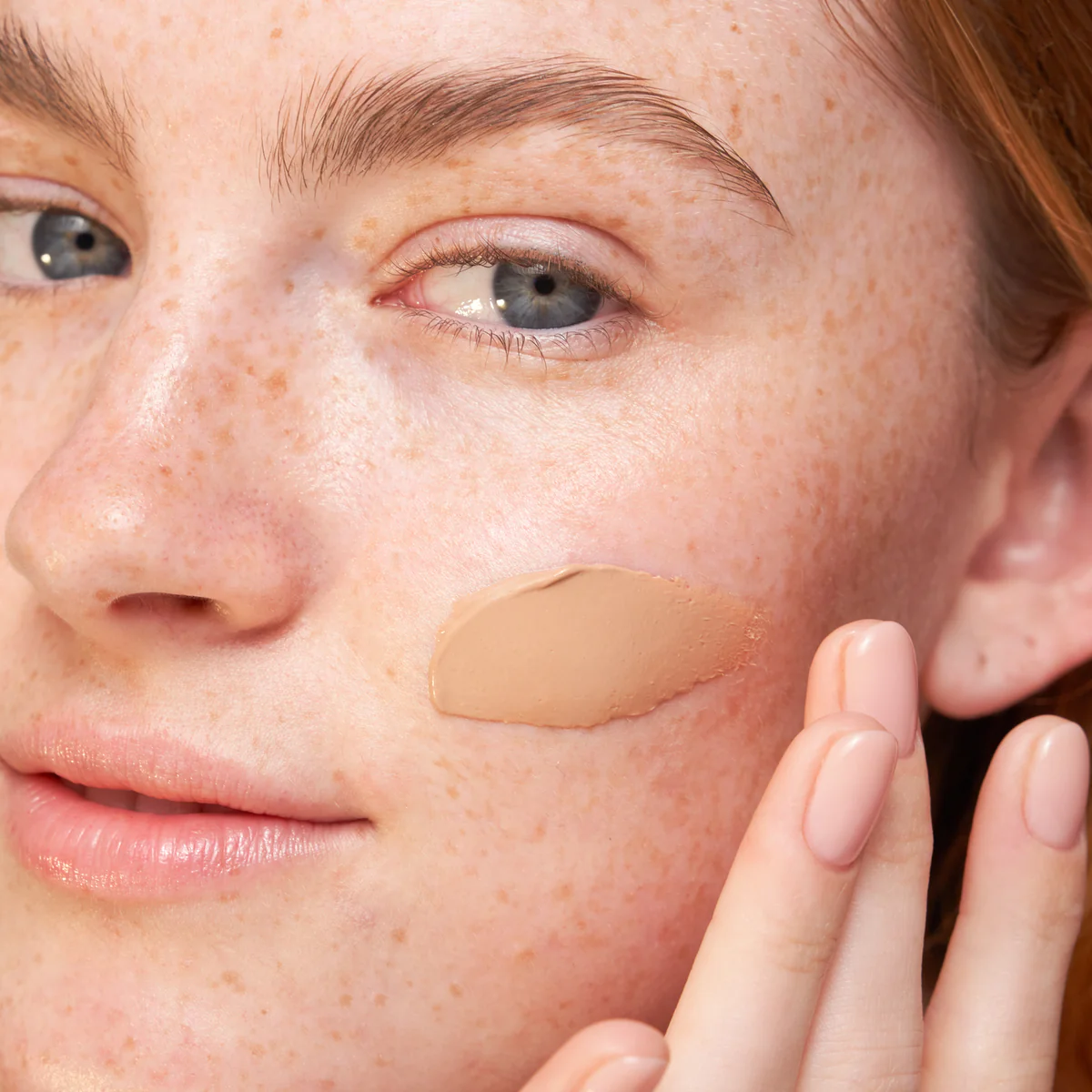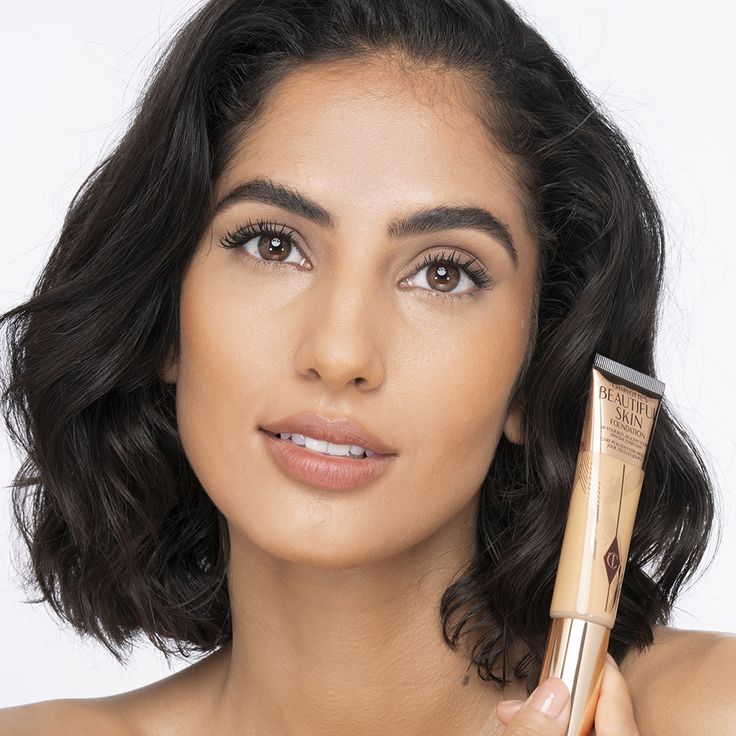
Match Your Skin: Picking the Perfect Foundation Color
Assessing Your Skin Undertone
Identifying your skin undertone is a crucial step in learning how to pick foundation color. Your skin’s undertone is the color beneath the surface, which can be warm, cool, or neutral. Before you can find your perfect foundation match, knowing your skin’s undertone is essential. Here’s how to assess it:
- Check Your Veins: Look at the veins on the inside of your wrist. If they appear blue or purple, you likely have a cool undertone. Green veins suggest a warm undertone, while blue-green veins indicate a neutral undertone.
- The Jewelry Test: Gold and silver jewelry can help determine your undertone. Generally, if gold jewelry complements your skin better, you may have a warm undertone. If silver looks more flattering, you probably have a cool undertone. If both metals look good, you’re likely neutral.
- Consider Your Reactions to the Sun: Do you tan easily and rarely burn? This usually means a warm undertone. If you burn easily or turn pink, a cool undertone is more likely. If you tan slightly but can also burn, a neutral undertone may be your match.

The Importance of Natural Lighting in Foundation Selection
Choosing the right foundation shade under natural lighting is key. Artificial lights can alter the appearance of your skin and makeup. They often cast a yellow, white, or blue tint, which can mislead your foundation choice. Natural light, on the other hand, provides the truest representation of your skin color and how the foundation will look in day-to-day life.
Here are reasons why natural lighting is essential when you learn how to pick foundation color:
- True Color Match: In natural light, foundation shades show their true colors. This helps in selecting the closest match to your skin tone.
- Consistent Lighting: Store lighting varies, but the sun’s light is consistent. This means you’re more likely to pick the same right shade over time.
- Identifying Undertones: As mentioned before, understanding your undertone is crucial. Natural light helps to see the subtle hues in your skin, making it easier to choose the correct undertone in your foundation.
- Avoiding a Makeup Mismatch: Applying makeup in artificial light can look different once you step outside. Matching foundation in natural light helps avoid this common issue.
So, always test makeup close to a window or outdoors if possible. This step could make a huge difference in your foundation selection process.
Swatching Foundation Shades: The Jawline Test
When you know how to pick foundation color, swatching is your next step. Swatching means to test different foundation shades on your skin. The jawline test is a reliable method for swatching. Here’s how to do it correctly:
- Apply stripes of foundation: Choose a few shades that seem close to your skin tone. Apply them in stripes along your jawline. The jawline is the best place to test because it shows your true skin tone and connects to your neck.
- Check in natural light: After application, step outside or go near a window. This helps you see how each color looks in the sun’s consistent lighting.
- Look for the invisible shade: The right foundation should blend seamlessly into your skin. It will be hard to tell where your skin ends and where the foundation begins.
- Wait for oxidation: Foundation can change color as it dries and reacts with air (oxidizes). Wait a few minutes to see the final color.
Using these steps during the jawline test will help you pick the perfect foundation color. Remember, the goal is to find a shade that appears to disappear on your skin.

Comparing Warm, Neutral, and Cool Foundation Tones
After assessing your skin undertone, you must understand the different foundation tones available. Each category—warm, neutral, and cool—matches certain skin undertones. Here’s a simple comparison to help you grasp how to pick foundation color accurately.
- Warm Tones: These foundations have yellow, peach, or golden undertones. They complement skin that tans easily or has gold veins. Warm tones look best if you have a warm undertone.
- Neutral Tones: Neutral foundations are balanced, with no obvious pink, yellow, or golden hue. They suit people with blue-green veins. Choose neutral if both gold and silver jewelry look good on you.
- Cool Tones: Cool-toned foundations feature hints of pink, red, or blue. They match skin that burns easily or has blue veins. If silver jewelry flatters you more, cool tones are likely your match.
Matching your skin with the corresponding foundation tone creates a seamless look. Always keep natural lighting in mind when comparing these tones. Doing this helps ensure the color you pick truly matches your undertone. Try samples of each to see which one blends into your skin without standing out.
Tips for Testing Foundation Colors in Store
When you visit a store to pick foundation color, follow these tips for the best results:
- Start with Clean Skin: Ensure your face is clean and free of old makeup. This gives you a true starting point.
- Use Testers Wisely: Look for sample testers available in the store. Testers let you try before you buy.
- Apply Small Amounts: Dab a little foundation, not too much. It should be enough to blend and test.
- Test Multiple Shades: Don’t limit yourself to one color. Swipe several shades that look close to your tone.
- Blend Well: Gently blend each swatch. This shows how the makeup interacts with your skin.
- Step Outdoors: If you can, check the color outside. Natural light gives the best view of how it truly matches.
- Seek Professional Help: Ask a beauty advisor in the store. They can offer guidance on how to pick foundation color for your skin.
- Consider Store Lighting: Remember the lighting in the store can be misleading. Always keep natural lighting in mind.
Using these strategies helps you avoid common mistakes when choosing foundation color in-store and ensures you leave with a shade that fits your skin beautifully. Remember, the goal is to find a foundation that looks like your skin, but better.

Navigating foundation shades for multi-tonal skin can feel challenging. Your face may have a mix of undertones and colors. Here’s how to find your ideal match:
- Identify Dominant Undertone: Look for the most prevalent undertone across your face. Stick to this for your foundation choice.
- Consider Your Cheeks and Forehead: Your cheeks and forehead may differ in color. Match your foundation to your jawline for the best blend.
- Test Multiple Areas: When swatching, apply shades to your cheek, forehead, and jawline. Find the color that suits all areas well.
- Blend Different Shades: Sometimes, blending two foundation shades creates the perfect custom color. Don’t be afraid to mix.
- Use Color Correctors: Apply color correctors to even out areas of discoloration before applying foundation.
- Consult a Professional: If you’re unsure, seek help from a makeup artist. They can guide you in how to pick foundation color.
Remember, the goal is to achieve a cohesive and natural look, even with multi-tonal skin. Take your time to test different shades and find the best one for your unique complexion.
Adjusting Foundation Shade for Seasonal Skin Color Changes
As seasons change, so can your skin color. This might mean that the perfect foundation shade in the summer isn’t so perfect in the winter. Here are practical tips on how to pick foundation color that adapts to your changing skin tone throughout the year:
- Lighter in Winter: Your skin may lighten in the winter. Look for a foundation one shade lighter than your summer color.
- Darker in Summer: Sun exposure can darken your skin. Choose a foundation that’s a shade or two darker to match your tanned skin.
- Blend Shades: If you can’t find the exact match, mix a lighter and darker foundation. Create a custom shade that fits your current skin tone.
- Monitor Your Skin Tone: Be aware of how your skin changes with the seasons. This helps you anticipate color adjustments needed.
- Transition with the Seasons: As seasons shift, so should your foundation. Gradually mix in the new shade to match your skin’s changing tone.
- Use Bronzer or Highlighter: Adjust your makeup routine with bronzer in the summer or highlighter in the winter to complement your foundation.
Remember, the key is to ensure your foundation always looks natural, no matter the season. By adjusting your shade to match seasonal skin color changes, you maintain a flawless look year-round.

Top Mistakes to Avoid When Choosing Foundation Color
Choosing the right foundation color is crucial for a flawless makeup look. To help you master how to pick foundation color, be mindful of these common errors:
- Ignoring Your Skin’s Undertone: Not considering whether your skin has a warm, cool, or neutral undertone can lead to a mismatch.
- Testing on the Wrong Area: Swatching foundation on your hand instead of your jawline won’t give an accurate match.
- Not Using Natural Light: Trying foundation shades under store lighting instead of natural light can deceive you.
- Forgetting Seasonal Changes: Sticking to one foundation shade all year round may not work as your skin tone shifts with seasons.
- Overlooking Oxidation: Not waiting for foundation to oxidize can result in a shade that’s too dark or orange.
- Rushing Your Choice: Choosing hastily without adequately testing the foundation can lead to poor color selection.
- Applying Too Much Product: Using a heavy hand with foundation can mask your natural skin and look unnatural.
By avoiding these pitfalls, you can select a foundation shade that seamlessly blends with your skin for a natural and consistent complexion.

